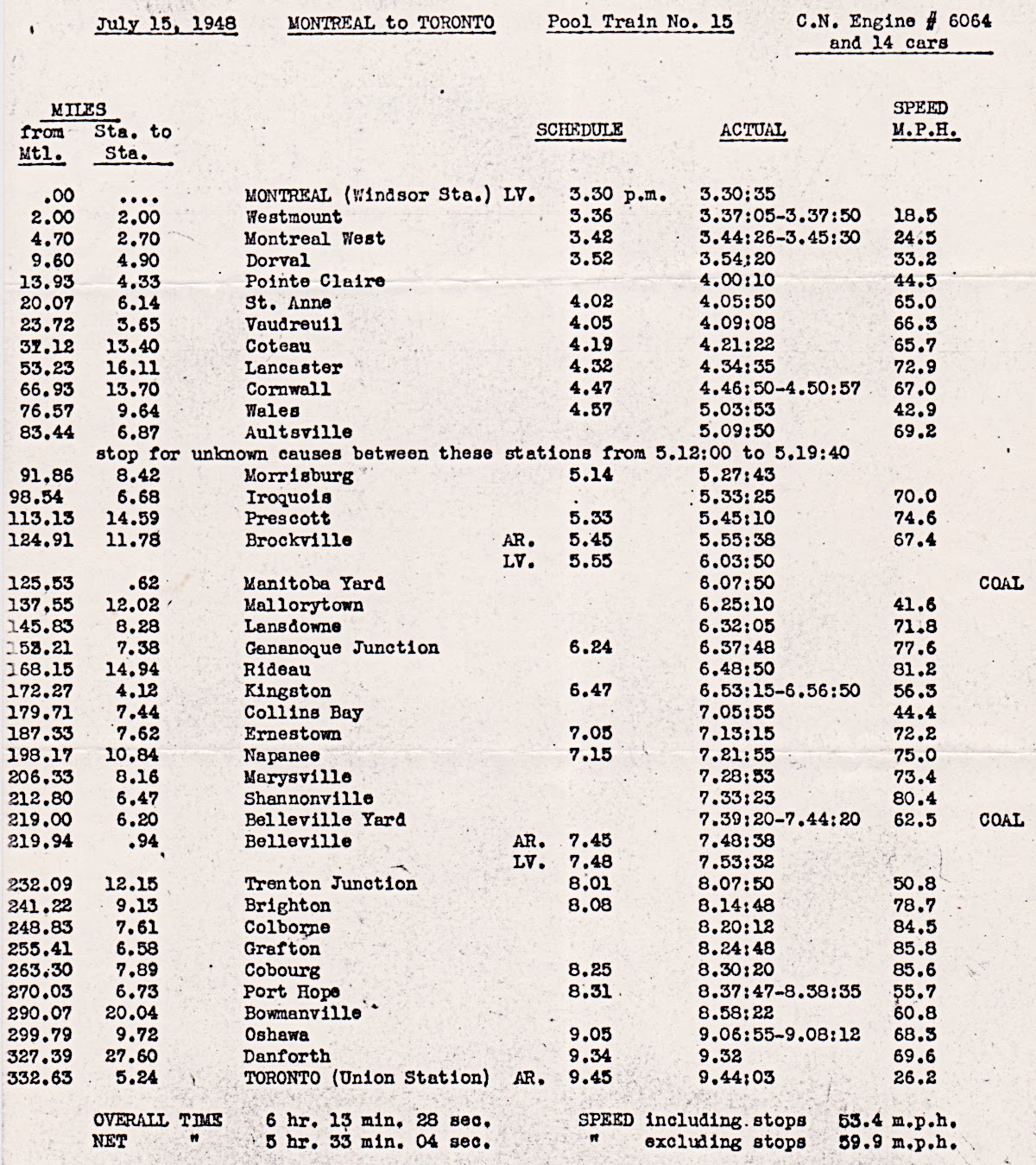These lists and accounts were mailed by John Welsh (of Dorval) to LC Gagnon (of Amherstview) and filed away with other Welsh artifacts - which generally included timetables that were often supplied gratis. These two people never met in person and carried on a correspondence for a decade or so in the 1970s. My father first discovered Mr Welsh's artifact business from a note in Canadian Rail.
This first listing from 1933 comes from Railroad Stories - one of the various names employed by Railroad magazine over the years. A impressive, large collection of this old 'pulp' magazine can be found at archive.org. I discovered the size of this collection as I tried to obtain and fill in the illustrations from this particular article.
In the mid-1960s, my school principal proudly showed off and demonstrated to the first random kid coming into the school office (me) ... his very first photocopier. Perhaps Mr Welsh used one of these early miraculous (back then) machines to Xerox this particular article.
To avoid hurting our feelings, this American magazine has also included Canadian fast trains in this survey. The data is based on timetables published in the Official Guide.
A sample of the first page appears as an 'artifact' and I have enhanced the print from that page immediately below - the first full-width block of data.
Note: The lists are sub-divided and presented by 'length of train run'.
As I was on my own to supply illustrations, I have obtained a few images to represent some of the trains listed.
In a few cases the images miss 1933 by decade or so.
 |
| from: The Golden Age of the Passenger Train; CJ Riley; 1997; Friedman/Fairfax. |
The Twentieth Century Limited leaves Chicago in 1939.
(For younger enthusiasts - like me - who were never told what a 'limited' was ...
it advertised a limited number of time-consuming station stops en route ...
not the common 'LLC' meaning of today - a business legal construct to negate owners' personal liability.)
 |
| from: The Golden Age of the Passenger Train; CJ Riley; 1997; Friedman/Fairfax. |
The Orange Blossom Special is inaugurated with champagne in 1935 at Pennsylvania Station, New York.
Hopefully, they intend to adjust the length of the 'pendulum' so the bottle hits the coupler.
The song/fiddle piece about this named train was copyrighted in 1938.
 |
| from: Speedway to Sunshine; Seth Bramson; 1984; Boston Mills Press. |
Seven Sections! : It may be the Great Depression, but someone has money to travel south.
Recreation Car! : Cards, folding chairs, magazines ... and a band.
This short film by the Australian Commonwealth Film Unit
explains the unique and vital role of this train.
(1954, length 7:51)
There is some good First Generation EMD (built under licence) footage.
Not having significant internal waterways, it could be argued that Australia
is traditionally more railway-oriented than Canada.
 |
| from: The Central Pacific & the Southern Pacific Railroads; Lucius Beebe: 1963; Howell-North Books. |
The photo above is circa 1920.
"Look everyone, that man has begun to light the switch lamps for the night!"
 |
| from: unknown publication. Files of LC Gagnon. |
We've just passed the 60th anniversary of the first Japanese bullet trains.
It has been half a century since a Canadian railway's own 'passenger department' managers had any pride in running fast passenger trains on a tight schedule. And things weren't necessarily better in the 'old days', says this Generation Jones blogger.
... Good old days CP Rail passenger and old VIA could be pretty threadbare and terrible. However, CN's Rapido trains were often worthy of their name.
After reading Eric's excellent research on CNR's 'loss of shunt' failings ... I could give you 4 or 5 technical reasons why the new technology is different, and why loss of shunt is important.
But, to be mischievous ...
How many axles did the original CN Turbotrains have when they went into service?
VIA's Ventures & Loss-of-Shunt - Enhanced Post
If VIA/CNR ever agree to run fast 'name trains' on tight schedules,
they could mount drumhead signs on the front and rear knuckles.













